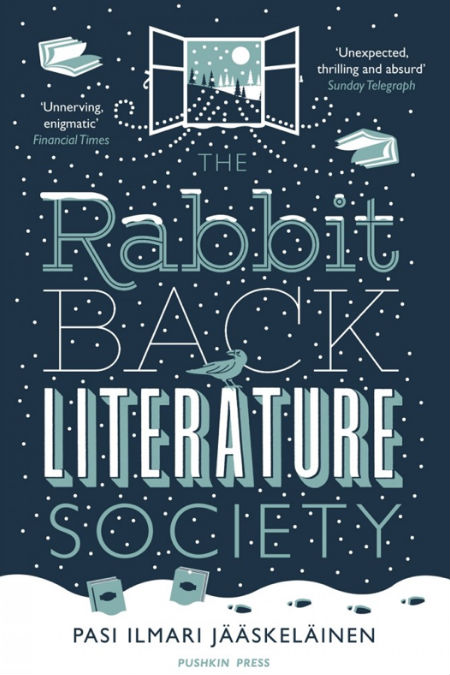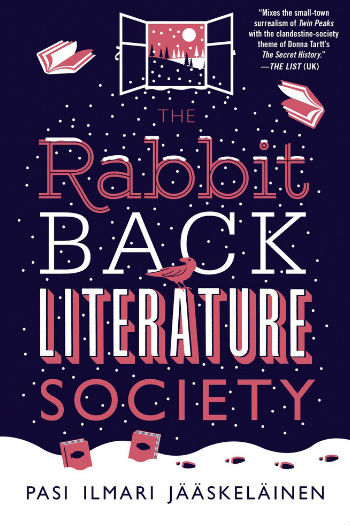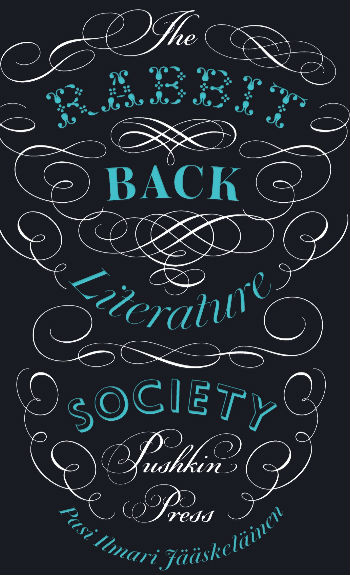
Ask any writer and they will tell you that the seemingly mundane act of putting pen to paper, whether literally or figuratively, can often seem quite magical and strangely supernatural.
Characters seem to come alive and talk to you, as real as your physical friends and family, demanding to be written this way or that; carefully laid plot lines take on a life of their own demanding you keep up with them or die trying (sometimes it feels as if you are); all while your lovingly-polished outline becomes as outdated as padded shoulders on a baggy jacket.
It’s not pretty, and it can be downright frustrating and uncomfortable but as Pasi Ilmari Jääskeläinen, author of the deliciously, idiosyncratically dark book The Rabbit Literature Society makes poetically clear, it can also lead to rewards without measure if you can survive the process.
Granted, the writers who live in the odd little town of Rabbit Back, peopled as much by goblins, elves and water nymphs, or at least the belief in them, as flesh-and-blood towns folk, all the members of the literature society founded by the Finnish locale’s most famous author, the mysterious Laura White, since childhood have paid more than their fair share of dues on their way to literary success.
Groomed, some would say manipulated, from a young age to become writers of renown and distinction by White, author of the much-loved Creatureville series of books – a series not written for children necessarily but adopted by them nonetheless, illustrating once again that once an author releases their book, it belongs to the world – these nine men and women, who are belatedly joined in adulthood by a tenth member Ella Milana, the book’s protagonist and voice, have become set apart from the world and each other.

Players of The Game, a deeply invasive baring of the soul often aided by alcohol and Sodium Pentathol in which one Society member challenges another to divulge painful, long buried secrets in a ritual so taxing, and revealing, they now keep their distance from each other where possible, these ten people have found success yes – technically Milana is yet to make her name but it is assumed that is only a matter of time – by mining each other’s lives for inspiration.
Often it must be noted with some violence involved since The Game comes with the sorts of ritualistic, almost brutally invasive rules most fair-minded people might justifiably find a little too confronting to handle.
“Ella took hold of Ingrid’s lower lip. Then she twisted it until the woman let out a high-pitched cry of pain. A drop of blood rolled down her chin. ‘All right,’ Ingrid said, mollified and a little frightened. ‘You understand Rule 21. So let’s play.'”
Milana, battling to make her way into a group of people who formed close and yet now arms length bonds with each other long ago, suspects that there may be more at play than a simple though arduous game and she makes it her mission to discover more about Laura White’s anointed, and often horribly conflicted, literary geniuses.
Over the course of her research – in a bid to augment her income she accepts a brief to find out as much unusual and unknown information about the Society as she can, revelations which will be lapped up by an eager and intrigued public – she also discovers rather more about herself and her willingness to further her career than she might have been expecting.

What makes this book so magical, quite apart from Jääskeläinen’s whimsically poetic turns of phrase, beautifully preserved by Lola. M Rogers who translated the book into English, is the way it never quite answers all the mysteries swirling in and around this enigmatic crowd of set apart writers.
Some answers are provided but many are not, and we are left to wonder, as the real meets the fantastical – there is for instance an odd virus that afflicts all the books in the town’s library significantly altering their plots and character interactions; the only solution? A good old-fashioned book burning to cleanse the shelves – exactly what really took place in the lives of these people and what did not.
Among the answers we do get, including the revelation that there was a tenth member who died while still a boy in darkly mysterious circumstances, there is a real sense that for all the accolades and success, the feting and the applauding, there has also been a great deal of loss and regret.
This is not to say that the writers are a poorly done by bunch – on the contrary, none of them bar the oddly-secretive Ingrid Katz seem to regret the paths their lives have taken – and you suspect they would readily agree that all the sacrifices, the poking and prodding by Laura White, who succeeds in becoming a mystery all of her own over the course of the book, has been more than worth it.
After all, the act of writing, of creating worlds, people and places not your own doesn’t come without a heavy price anyway, and better you are given a helping hand and succeed than be left to your own fickle devices, toiling away in literary obscurity.
The Rabbit Back Literature Society is not a perfect book, its narrative often twisting back on itself in ways that frustrate more than enthral at times, its penchant for obliqueness rivalling that of the TV series Lost, but it is by and large an enchanting, magical, beautifully-flowing book which examines what it means to write, to truly write, to be overwhelmed by your creativity, and whether it is, in the end, as worthwhile as you expected it would be in the beginning.